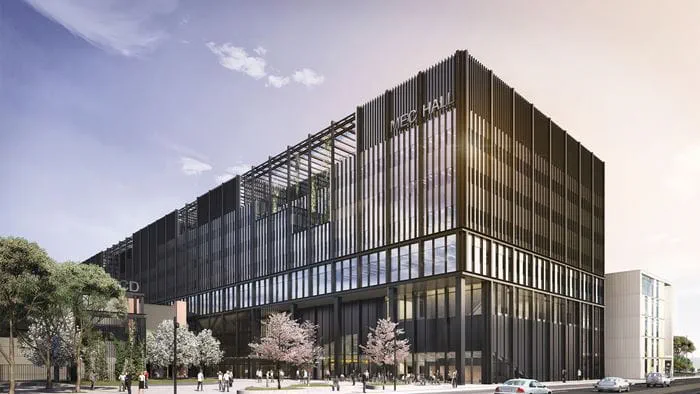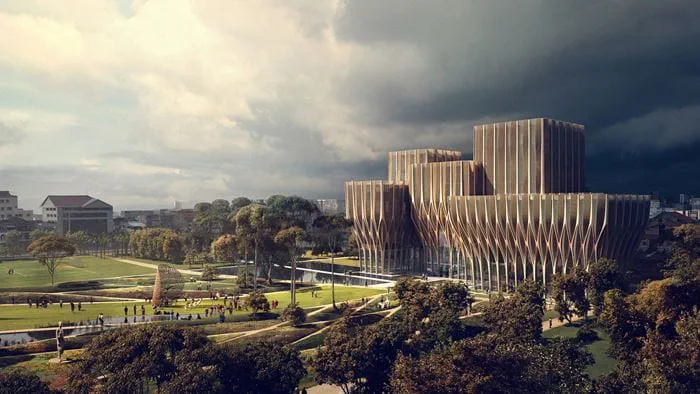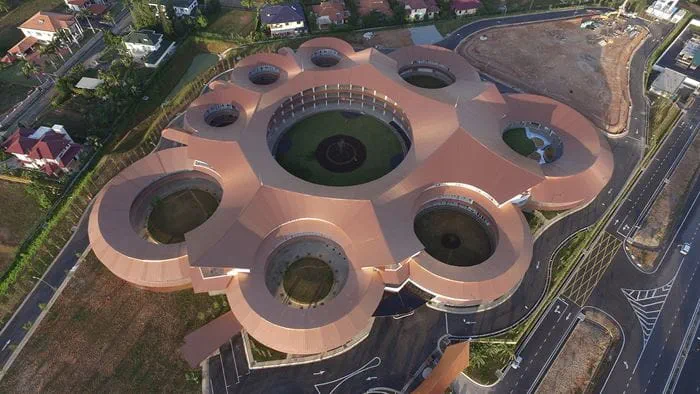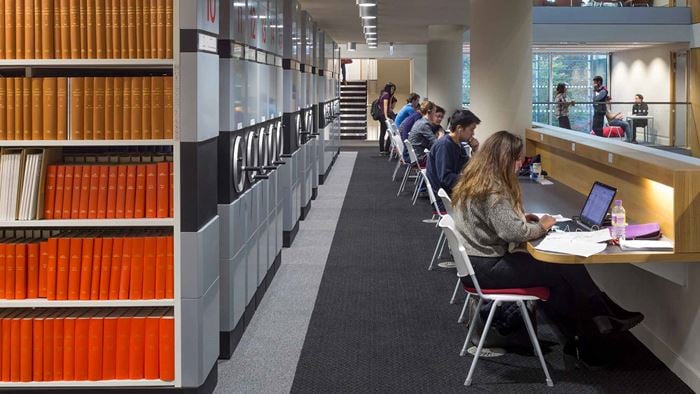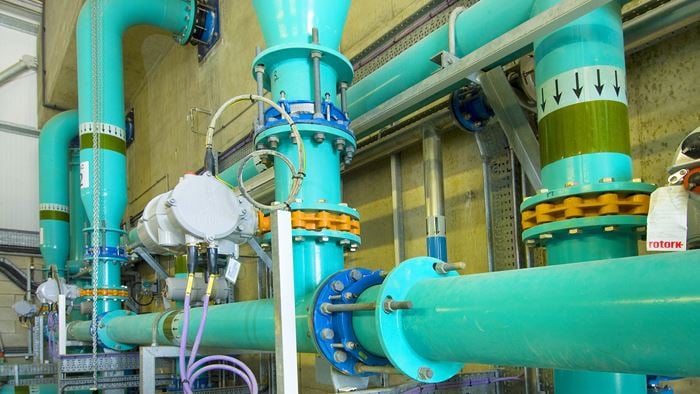The California Community Colleges System (CCCS) is the world’s largest higher education system. It has a total enrollment of over 2.5m students and occupies thousands of buildings across 110 campuses. One of these campuses, De Anza College in Cupertino, CA is home to the Kirsch Center for Environmental Studies, conceived by the College and correspondingly designed to be the lead demonstration building for energy innovation and sustainability within the CCCS.
Opened in early 2005 and encompassing 22,000ft2, the guiding philosophy is of a building that is first and foremost a functional educational facility, while at the same time incorporates practical and cost-effective energy improvements that are an inspiration to students and visitors. The Kirsch Center represents the next generation of educational innovation, where students can work in self-paced programs at special open study stations throughout the building. It is a building that teaches about energy and resources both in the curriculum and in the informal experience.
Few buildings so vividly reflect a response to local climate as does the Kirsch Center. The slanted roof line is used for improved performance of the rooftop photovoltaic array and for increased north glass daylighting and second floor natural ventilation. The west laboratory wing is naturally ventilated with a thermally massive floor and an innovative radiant cooling system to temper the site’s 96°F summer design condition.
The building has been well rated by occupants, winning first place in the inaugural Livable Buildings award from UC Berkeley’s Center for the Built Environment.
Arup provided mechanical, electrical and public health engineering for the Kirsch Center, while developing a holistic, sustainable Environmental Studies Building for the college using economical, energy saving strategies to accommodate budget constraints. Additional services provided by Arup included building physics and modelling, energy strategy, fluid dynamics, lighting design, and sustainable buildings design and consulting.
 ;
;





